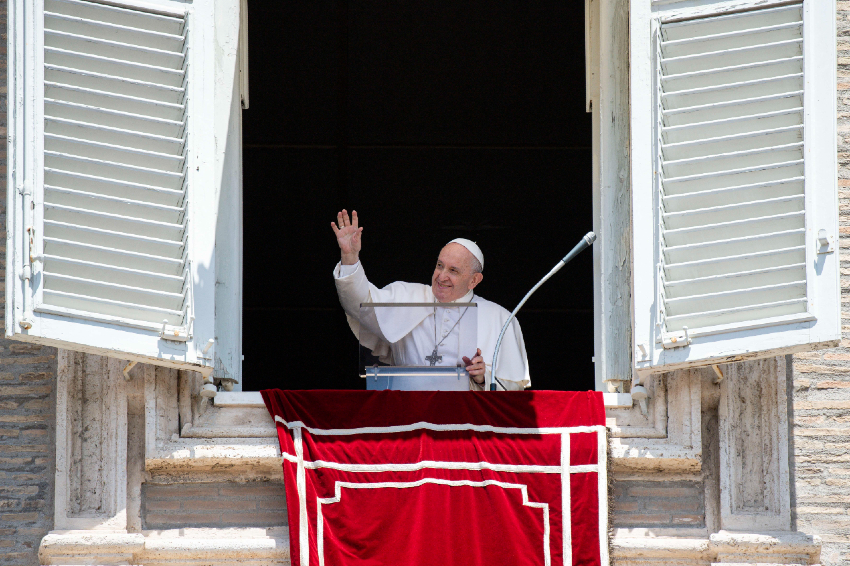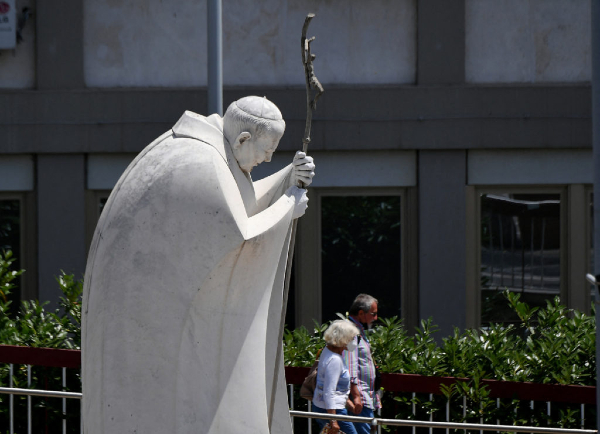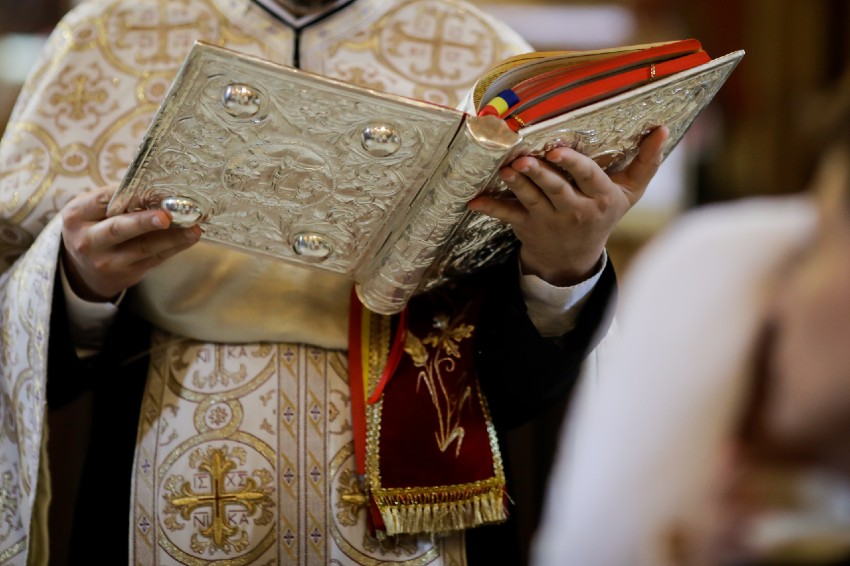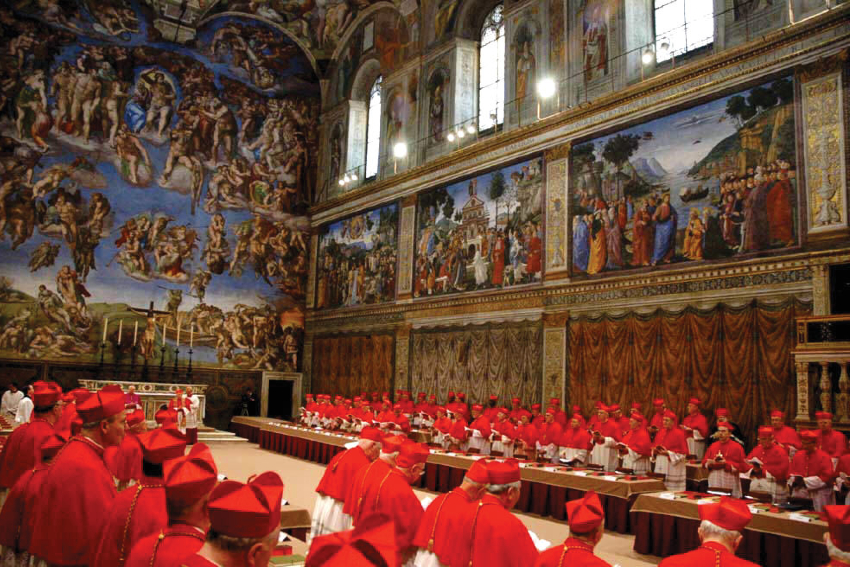
Letter #47, Wednesday, July 7, 2021: Francis
As I write, Pope Francis is resting in a Roman hospital, recovering from an operation on his colon on the evening of July 4.
During the operation, the Pope was under general anesthesia for about three hours.
The Pope reportedly came out of the operation in good order, and his recovery is expected to take about one week.
***
But there has been a buzz of news recently in the Eternal City regarding the Pope’s health.
Generally, the reports about the operation have been so positive that no concerns have arisen.
This has led some to wonder if the entourage of the Pope may be down-playing any negative effect of the surgery out of a desire that the Pope appear to the world as completely well and able to carry out all of his duties with no interruption for a full recovery.
Luis Badilla, the respected editor of the important Il Sismografo (link) website, has written that, though the surgery is not life-threatening, Pope Francis “will never be the same again.”
He has expressed concern that Vatican officials make the actual health of Pope Francis a priority over every desire to represent the Pope as invulnerable, including rushing his recovery.
That concern has been picked up and starkly emphasized in a Breitbart news report by Thomas Williams. (link).
Jason Horowitz of the New York Times has added his own twist to the mix, reporting (link):
“In the Vatican there is a joke that the pope is always fine until he dies, and even a little after that moment,” said Iacopo Scaramuzzi, a Vatican expert who writes for the Askanews news agency, adding that the secrecy is the result of a fear of divisions in the Church, caused by premature and unseemly intrigues by cardinals seeking a successor.
So, some in Rome are expressing concern about the possible consequences of this surgery, despite the official statements that everything has gone well.
Here is what Luis Badilla wrote (link):
WEDNESDAY 7 JULY 2021, Italy
Pope Francis does not need flattery in the press
By Luis Badilla
(LB, RC, edited by Editorial Staff “Il sismografo”) — First we want to renew our wishes and prayers to the Holy Father Francis and thank God who protected him in an extremely delicate moment not only giving him the ability to recover but also vitality and responsiveness and, remarkably, a medical team and a health center among the best in the world.
However, there is a very significant detail that many in these hours underestimate, ignore or manipulate: the disease that has struck Pope Francis is severe and degenerative. It could also be chronic.
Certainly the Holy Father will return to the Vatican to resume his journey in the footsteps of Peter but he will never be the same again.
All the rhetoric about a Jorge Mario Bergoglio “superman” damages his image and his charisma.
People who read, listen or see the news are not stupid or unable to reflect and ask themselves questions also because millions of families have had similar experiences with their elders.
We know from numerous authoritative press sources that the Pope, on Sunday evening, was the first to undergo a laparoscopic operation with total anesthesia and powerful sedatives (almost a sort of scouring of the lower part of the abdominal cavity, with small, very sophisticated probes) and immediately after to an “open” or “open sky” surgical manipulation to enter and work with the hands in a total field of vision.
Laparoscopy has encountered insuperable obstacles and therefore, as often happens in this type of operation, the surgeon and his team along the way decided — the patient had given his consent to this possibility at the time of admission — to switch to another method that allowed the removal of several centimeters of the colon which are now undergoing rigorous histological checks.
From a passage in the bulletin of the Vatican Press Office yesterday, Tuesday 6 July, which ensures that the Pontiff “had breakfast,” it is possible to deduce that the surgery was not particularly devastating and this is great news.
The adult and mature faithful understand and understand, albeit with pain, that Pope Francis will live the life that God will give him with many physical and physiological as well as metabolic limitations.
It will have to be followed continuously with important clinical checks and other hospitalizations, albeit short, can be hypothesized; the absolutely necessary tools for diagnostic imaging do not exist in the Vatican and those of the Gemelli in Rome are the most technologically modern.
Therefore it is good to wait with affection and serenity for what the Holy Father will want to do so that everything is the result of his decisions and of the doctors who advise him, without having to suffer media pressure.
Nothing needs to be invented to keep Francis’ profile high, least of all for upcoming international even intercontinental trips.
It is clear that Francis is eager to go to Budapest for the closing of the 52nd International Eucharistic Congress and then to Slovakia in mid-September, but no one knows today if this pilgrimage will be possible. It is to be hoped that these Visits will become a reality but nothing more can be said.
The Holy Father must take care of his health carefully and in this he must be helped by everyone, mainly Catholics. He knows that he will have to change his life a lot: fatigue, rest, limits, nutrition, rehabilitative physical exercises …
One small way to stay close to the Pope while he regains his strength — a slow, gradual and complex process — is to do away with flattery in the press. Pope Francis does not need it.
[End, Badilla editorial]
And here is the Breitbart story that draws on Badilla’s editorial:
Vatican Insider: Pope Francis ‘Will Never Be the Same’ After Colon Operation (link)
By Thomas Williams
ROME — Luis Badilla, editor of the semi-official Vatican news aggregator Il Sismografo, said Wednesday that Pope Francis’ health situation is “severe” and when he returns from hospital he “will never be the same again.”
In his sobering blog post, Badilla declares that journalists and commentators are not doing the pope any favors when they downplay the seriousness of his illness.
There is a very significant detail that many “underestimate, ignore, or manipulate,” he writes, namely that “the disease that has affected Pope Francis is severe and degenerative” and “could also be chronic.”
“The Holy Father will certainly return to the Vatican to resume his path in the footsteps of Peter but he will never be the same again,” Badilla insists. “All the rhetoric about a Jorge Mario Bergoglio ‘superman’ damages his image and charisma.”
In his post, Badilla notes several details of the pope’s recent surgical operation to treat his diverticulitis that give cause for concern.
As cited by numerous authoritative press sources, on Sunday evening the pope underwent general anesthesia and was administered powerful sedatives, Badilla observes, after which he was “subjected to laparoscopic surgery (almost a sort of scouring of the lower part of the abdominal cavity, with small, very sophisticated probes) and immediately afterwards to an ‘open’ or ‘open sky’ surgical intervention to allow hands-on work with full visibility.”

A couple passes the statue of the late pope John Paul II outside the Policlinico A. Gemelli hospital in Rome on July 7, 2021, where Pope Francis arrived on July 4, to undergo a scheduled surgery. Pope Francis, 84, was recovering in hospital from surgery for an inflamed large colon, a potentially painful condition that could see him bed-bound for several days. (ISABELLA BONOTTO/AFP via Getty Images)
The laparoscopy encountered “insurmountable obstacles,” Badilla asserts, and therefore, the surgeon and his team decided “to switch to another method that allowed the removal of several centimeters of colon that are now being examined for rigorous histological controls.”
Given the gravity of the surgery, Badilla insists, it is counterproductive for journalists to act as if the intervention weren’t a big deal.
“People who read, listen to, or see the news are not stupid or unable to reflect and ask questions also because millions of families have had similar experiences with their elders,” he states.
“It is good to wait with affection and serenity for what the Holy Father will want to do so that everything is the result of his decisions and of the doctors who advise him, without having to suffer pressure from the media,” he insists.
Meanwhile, the state of the pope’s health may well affect future travel plans and other events, he adds.
“It is clear that Francis is eager to go to Budapest in mid-September for the closure of the 52nd International Eucharistic Congress and then on to Slovakia,” Badilla notes, “but no one knows today whether this pilgrimage will be possible.”
Here are excerpts from the Jason Horowitz article (link):
The usual secrecy of the Vatican raises doubts about the health of Pope Francis
By Jason Horowitz
A day after Pope John Paul II underwent a tracheostomy to alleviate respiratory problems in 2005, the Vatican spokesman at the time told the press that he had enjoyed a breakfast consisting of 10 cookies. And he died shortly after.
So when the Vatican spokesman said in a short statement Tuesday that the 84-year-old Francis was recovering well from colon surgery on Sunday, he had rested well, eaten breakfast, read some newspapers, and sat up to give some steps, there was – if not reasons to doubt the veracity of the Vatican statement – a cloud of skepticism surrounding the pontiff’s true condition in a well-guarded tenth floor of a hospital in Rome.
“In the Vatican there is a joke that the pope is always fine until he dies, and even a little after that moment,” said Iacopo Scaramuzzi, a Vatican expert who writes for the Askanews news agency, adding that the Secrecy is the result of a fear of divisions in the Church, caused by premature and unseemly intrigues by cardinals seeking a successor. “We should also add that the Vatican is generally not the most transparent institution in the world.”
(…)
On July 2, a Vatican spokesman, Matteo Bruni, issued a statement in which he reported that the prefecture of the Holy See announced that the general audiences of the pontiff would be suspended during the month of July for the “usual summer break” and would return to resume on August 4. Francis, the statement said, would continue to send messages to the faithful with his weekly Angelus prayer.
On Sunday afternoon, Bruni sent a message to reporters at 3:20 p.m. via the Telegram app, which he rarely uses, in which he said that Francisco, who had part of a lung removed from the 21 years old, he had been transferred to the Gemelli Clinic in Rome in the “afternoon” for a “planned surgery” in order to treat a symptomatic diverticular stenosis of the colon.
But if the operation was planned, as the Vatican said, it was the first time that it was heard.
The surprise announcement raised unnecessary alarm and journalists were left scrutinizing Francisco’s recent messages like someone reading the coffee grounds. “Pray in a special way: the pope needs your prayers,” he said in his weekly blessing on July 27.
For hours, while Italian television published anonymous leaks about the pope’s health and photographs of Innerspace from the colon of other patients, there were no official statements about the pontiff’s condition.
Shortly after midnight, the Vatican issued a statement that included the names of numerous doctors treating the pope saying that he “responded well to the operation, performed under general anesthesia.” On Monday, a brief Bruni bulletin issued at noon noted that Francisco was “in good general condition, alert and breathing alone” after a three-hour surgery. He said he was expected to leave the hospital in about seven days unless there were complications.
That’s it and that, experts say, is what the pope wants.
Despite having a large staff and a fast and agile online news outlet that accumulates millions of followers on Twitter and Instagram, experts at the Vatican say that Francis does not want his health or personal affairs to make headlines.
“He doesn’t want his admission to the hospital to become a spectacle,” said Paolo Rodari, a Vatican expert who writes for La Repubblica, the Rome daily. “He asked for absolute privacy and that is why the brief bulletins were published. It is simply his style.”
Defenders of the Vatican argue that much has changed since the time of Francis’ predecessors. Pope John Paul II was visibly ill before the Vatican officially addressed the matter of his health. Joaquin Navarro-Valls, his spokesman and former medical school colleague in his youth, drew internal criticism from Vatican officials in 1996 when he tacitly acknowledged that the pope had Parkinson’s disease. And the 1998 murder investigation of a Swiss Guard commander of the pope, his wife and a subordinate was closed three hours after the bodies were discovered and was never reopened.
(…)
Advocates for the Vatican say it has been much more transparent about the pope’s health challenges than it was during previous papacies. In recent years, the Vatican has attributed the pope’s visible lameness and difficulty walking to sciatica, a chronic nervous condition that causes back, hip and leg pain. Francisco defines him as a “problematic guest.”
(…)
Here is a Reuters article by the American Vaticanist Phil Pullella which discusses the way the hospitalization has been handled by the Vatican.
Two popes, same hospital, different styles of medical privacy (link)
By Philip Pullella
ROME, July 7 (Reuters) – When Pope John Paul II was admitted to Rome’s Gemelli hospital on July 12, 1992, he told the world himself a few hours earlier during his regular Sunday address in St. Peter’s Square.
“I would like to let you in on a secret,” he said before revealing that he would enter hospital that night. His departure from the Vatican, the crowds lining his motorcade route, and his arrival at the hospital’s front entrance in a black Mercedes convertible were broadcast on television.
When Pope Francis entered the same hospital last Sunday, the Vatican announced it in a two-paragraph statement after he had arrived in a small car, slipped inside and already was being prepared for colon surgery.
The two episodes show the differences in the two popes’ styles of dealing with health, privacy and communication.
Since Francis entered the hospital on Sunday, the Vatican has issued five very short statements with essential information.
Wednesday’s statement said his recovery was “regular and satisfactory”, that he was eating regularly, no longer receiving medication intravenously, and that a biopsy confirmed that he had been suffering from “severe diverticular stenosis,” or a narrowing of the colon. read more
When John Paul was in the same hospital — nearly 10 times in his 27 years as pontiff — it was the doctors who issued detailed medical bulletins, talked to reporters in the lobby and became minor celebrities on the evening news.
Politicians and others showed up at the hospital even if they could not see John Paul. They were received by his secretary or another Vatican official, signed a visitors’ book and recorded by the television cameras.
The guidance for a low-key hospital stay and less detailed medical statement is believed to come directly from Francis, who guards his privacy more closely than John Paul.
Each Pope Different
“Each famous person, including a pope, is different,” said a person who deals with communications at a major medical institution in Italy.
“Hospitals are in a bind when dealing with famous people because there are strict privacy laws but the public wants information. It usually falls on the patient to decide how much to disclose,” said the person, who spoke on the condition of anonymity.
Early on Wednesday at the Gemelli there were just two television crews and a handful of photographers. They were relegated to a parking lot and not allowed in the lobby.
During some of John Paul’s stays, the lobby became a media whirlwind, with television reporters trying to get sound bites from doctors, patients and visitors.
On Wednesday morning at the Gemelli, the lobby bustled but there was nothing to indicate that a VIP was on the 10th floor of the sprawling Catholic-run hospital.
A part of that floor is permanently reserved for popes and includes its own intensive care unit.
John Paul, who became pope as a fit 58-year-old, had numerous health issues during his papacy, starting with the effects of being shot in the abdomen by a would-be assassin on May 13, 1981 in St. Peter’s Square.
During the 1992 hospitalisation he had an intestinal tumour removed. He later dislocated his shoulder, broke his femur, suffered from severe Parkinson’s Disease and needed a tracheotomy to help him breathe weeks before he died in 2005.
He suffered at length and in public and even wrote a document on how suffering can bring spiritual gain.
Francis once told a reporter that in case of an assassination attempt, he wanted a quick death because he is afraid of pain.
Reporting by Philip Pullella
Editing by Alexandra Hudson
[End, articles about the Pope’s health]








Facebook Comments